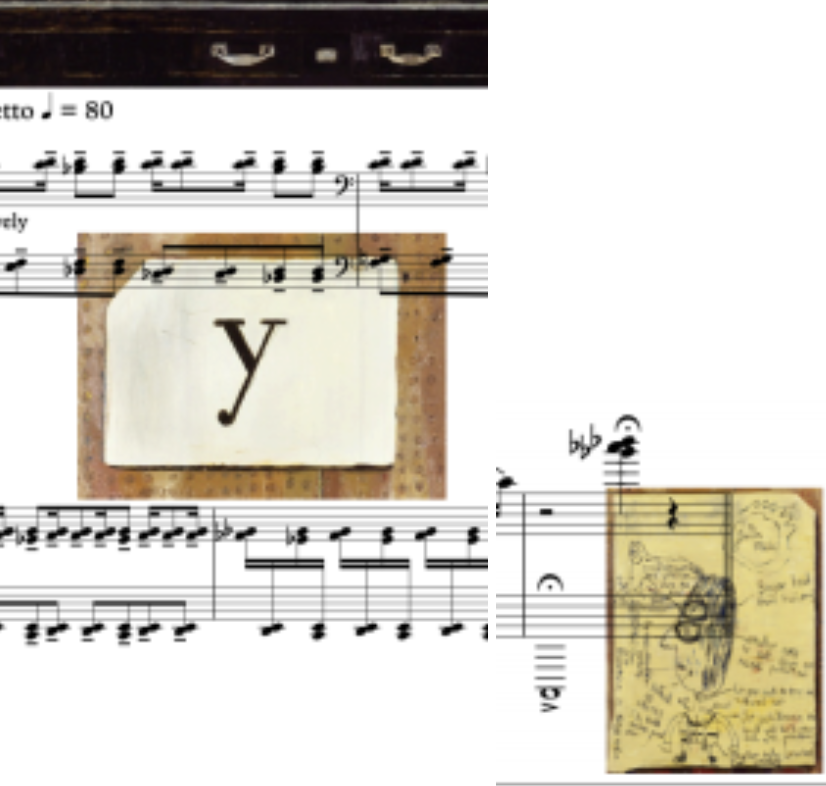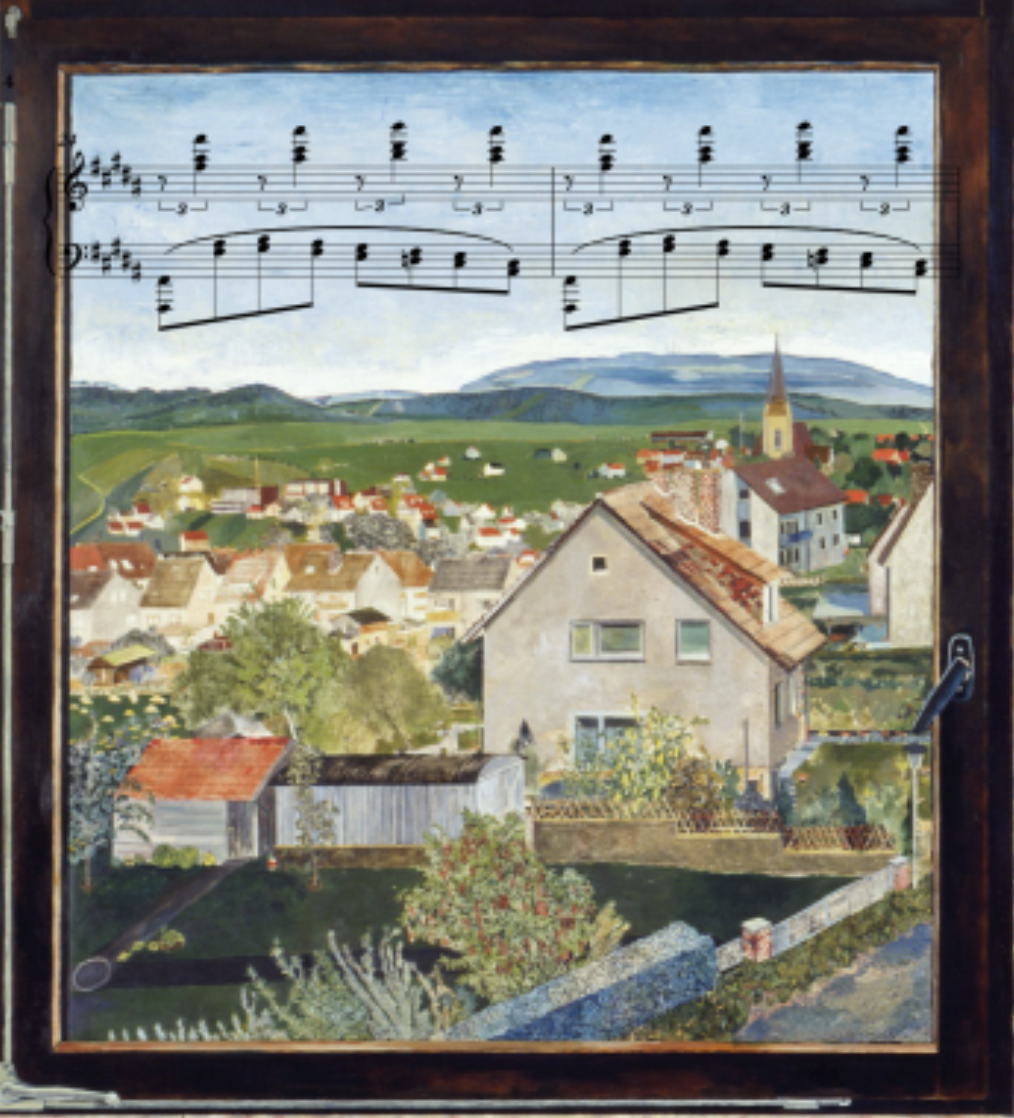Color and Sound
By Milad Yousufi
I begin my composition process from a small idea. First I write a sentence about a memory or an inspiration. After writing that memory I reflect up on the idea and write a complete poem about that subject. After writing poetry, I create a visual component inspired by my poem by painting something. After I paint, I start to compose. This makes the process of composing inspiring and much faster. I usually employ this process when I write large-scale pieces like symphonies, brass band or chamber orchestra pieces.
For chamber orchestra pieces, I go through the same process but in a smaller context by starting with poetry and a small sketch on a paper and then writing the piece. It mostly depends on how immense the piece is. When writing a big orchestral piece or a symphony, I feel that I have to create a more epic painting or work of calligraphy to inspire my composition.
Below are the three components of my compositional process, beginning with my poem “Refugee,” my work of visual art, and a picture of my score in progress.
Refugee by Milad Yousufi
I am a refugee, I am the wind,
I live on the top of mountains, trees and hills, the world is my home, I live everywhere but yet I am homeless,
I feel people's faces, surface of the oceans, roads and the forests. I am everywhere but yet I am nowhere,
I cover everything, from south to north, from east to west, I am everything, but yet I am nothing,
My mysterious being guides the rain drops where to fall, my immense presence encompasses the horizon, but yet I don't exist.
I am a refugee, I am the wind,
I live on the top of mountains, trees and hills, the world is my home, I live everywhere, but yet I am homeless.
Starting from one of my poems helps me to have an imagination, then I start working with colors and see if I can put the words into the paper like a sketch.
After the sketch, I start to put the colors on canvas and work on the painting.
Most of the time, I start the painting and composition process at the same time because it provides a context to work with sound and colors at the same time.
Above is the second stage of the process where I get the ideas from the poetry and put it together into staff paper in an abstract style. After working on the music and painting sketches on paper, I start to integrate the musical and artistic ideas together and form a general structure.
After working on notating the music and drawing painting sketches on paper, I begin to integrate my musical and artistic ideas together to form a general structure.
Above is the third part of the process where I start the painting from the sketches and my own inspirations from the scene I created in the earlier sketches.
Composing “The Triptych”
One of my recent pieces (The Triptych) was inspired by Simon Dinnerstein’s painting called The Fulbright Triptych. In the beginning of the process, I wrote all my ideas and questions down:
1- Should I write three themes in general for this piece since there are three characters in the painting!?
2- Should the themes be totally different because of the themes in the painting?
3- The themes that are in the painting: family, windows, art, distance, memories…
4- Should I introduce all themes together or one after another?
5- Should it be in the fugal style because of the few different themes the painting have?
6- It will be a totally different piece if I focus on the texture of the painting rather the themes!
7- Should every small painting in the background have a motive or a theme?
8- The painting is in three different installments, should I focus on every installment separately?
9- There is a Persian miniature in the painting that I can connect to with my heritage, should it be the main subject or countersubject?
10- Should I incorporate blended sound by having a drone in background and introduce the subjects and themes on top, like the painting?
Then, I took different parts of the painting, glued them to the score and wrote themes inspired by each part of the painting:






